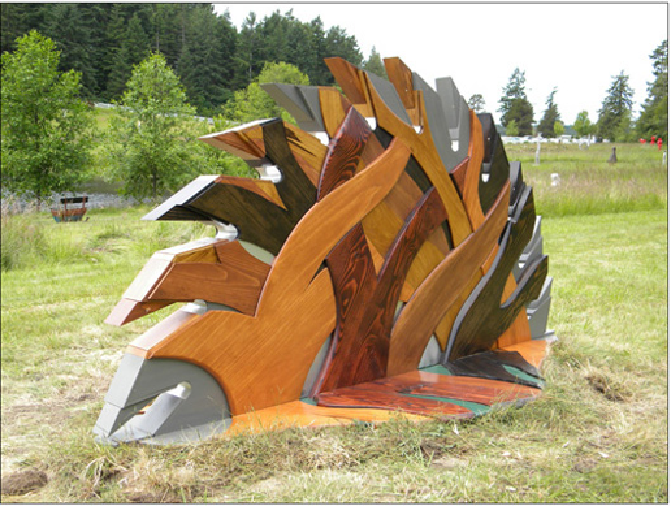Graphics Programs Reference
In-Depth Information
(Window> Navigator). When she zoomed into an area, either drawing with
the Blob Brush, or adjusting a path with the Direct Selection tool, she could
refer to the Navigator panel and easily see how the changes she made in a
particular area affected the entire portrait, without having to constantly zoom
in and out of the drawing. Although the low fidelity Blob Brush setting in CS6
often creates too many anchor points, Graham prefers to start with this
setting and later apply Object> Path> Simplify, specifying 95% for Curve
Precision (if there aren't too many extra points, she skips the Simplify step
and applies the Smooth tool instead). To finish the portrait, Graham made
custom art brushes with tapered ends (directly above) for the details such
as the eyelashes and eyebrows. She used a Round Curve Bristle Brush to
create the shadows behind the head.
KLEMA
Stephen A. Klema
Stephen Klema uses Illustrator's Live Paint to assist him in the conception
and construction of his sculptures. For “Wood's Revenge,” he scanned his
pencil sketch of the tree and saw blade, then opened it in Illustrator. To keep
the outline distinct as he filled in the parts, he used the Pen tool to create a
contour shape with a white fill and no stroke, and used it as a mask on the
top layer. He selected the Paint-brush with a 1pt stroke to begin tracing
(Live Paint converts brushstrokes to basic strokes, so the Pen or Pencil tools
will also work here). After tracing some of the key lines that would become
his wood shapes, Klema selected them and chose Object> Live Paint>



